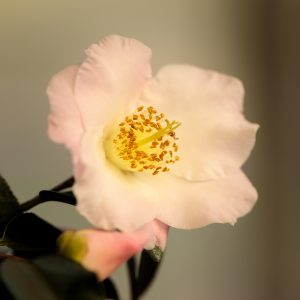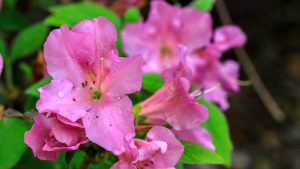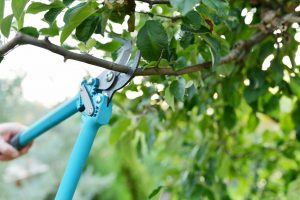One of the most frequent questions we get from homeowners is “How should should I prune X plant?”. Centuries of gardeners have written guides on pruning timing and best practices, often contradicting each other, and it can feel overwhelming. What should we do? My vote is to listen to the plants, they will show you what they need. Follow the steps below for a quick guide to pruning the majority of landscape plants:

Step 1: Look for flower buds. The first thing I look for when judging when to prune a plant is to look for flower buds. They can be prominent like Rhododendron or Camellia or subtle like Redbud or Whitch-hazel. If you can see visible buds then chances are waiting to prune the plant is in your best interest. Plants that are commonly mis-pruned after buds are set (leading to lost years of flowers) are azaleas, viburnum, and camellias.
Step 2: Look for damage. While you are scouting for flower buds check your plants for damage. Broken branches can seal an injury giving the appearance of a healthy plant only to show again when the weather triggers a stress response. Making clean pruning cuts just below damaged tissue can greatly speed up healing and recovery time even if it results in a dramatic hole initially. Removing small dead branches can also dramatically improve the looks of seemingly tired shrubs and trees.

Step 3: Do not be afraid to start over. Rejuvenation pruning is a powerful tool for gardeners. Sometimes things are too far gone to save making a hard cutback and patience the best mode of action. Overgrown holly, Ligustrum, and Loropetalum hedges cut back to 12 inch stubs can often regenerate 2-3 feet in the first season giving you a refreshed look without the pulling and digging. Other large flowering bushes like knockout rose, butterfly bush, and panicle hydrangea can take on more compact and desirable forms with yearly cutbacks.
Step 4: Shape last. The most common mistake I see in pruning is a valiant attempt to make plants into a geometric shape. Don’t get me wrong, that shape is very important aesthetically. However, we want to make sure we have a strong foundation of branching before we perfect the final form. Once you have cleaned up the damages and defects in the plant, shaping becomes the icing on the cake.

Step 5: Follow your gut. When in doubt follow your instincts. There are very few actions you can take with a plant that will cause irreparable damage. Often, not taking action is the worst option. Don’t be hard on yourself and learn from your experiences. I have made plenty of mistakes pruning in my career and undoubtedly you will too. Just remember, plants are much more adaptable than we give them credit for. You may lose a season of flowers or have to wait for a couple flushes of growth for a hole to fill in but the plant will keep growing.
I hope you find these tips helpful and please do not hesitate to reach out to our skilled staff if you ever have questions about your plants! We love to help and have a skilled team that can come to your aid if you find yourself in over your head!
– Matt Cox, Landscape Maintenance Supervisor
